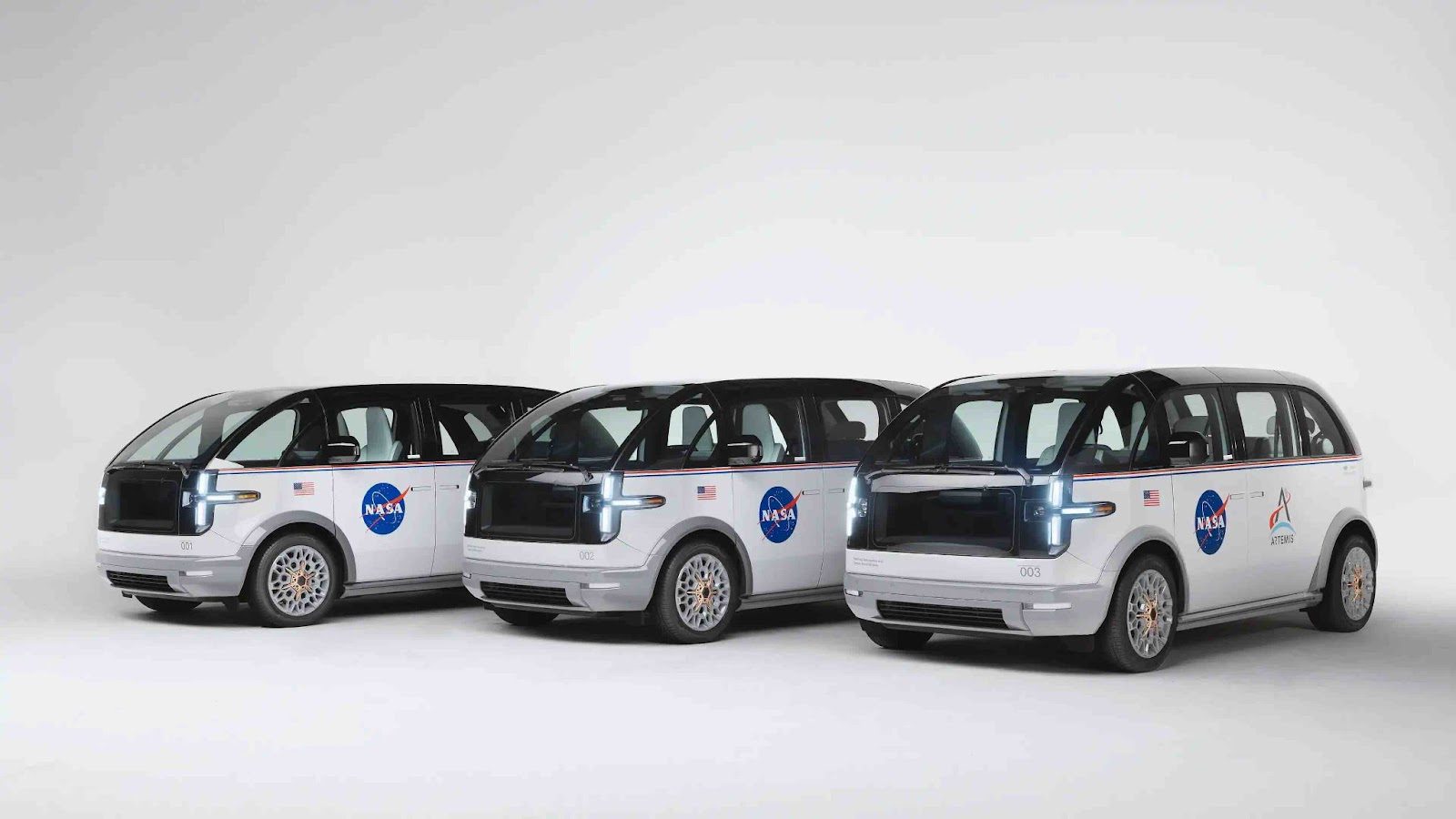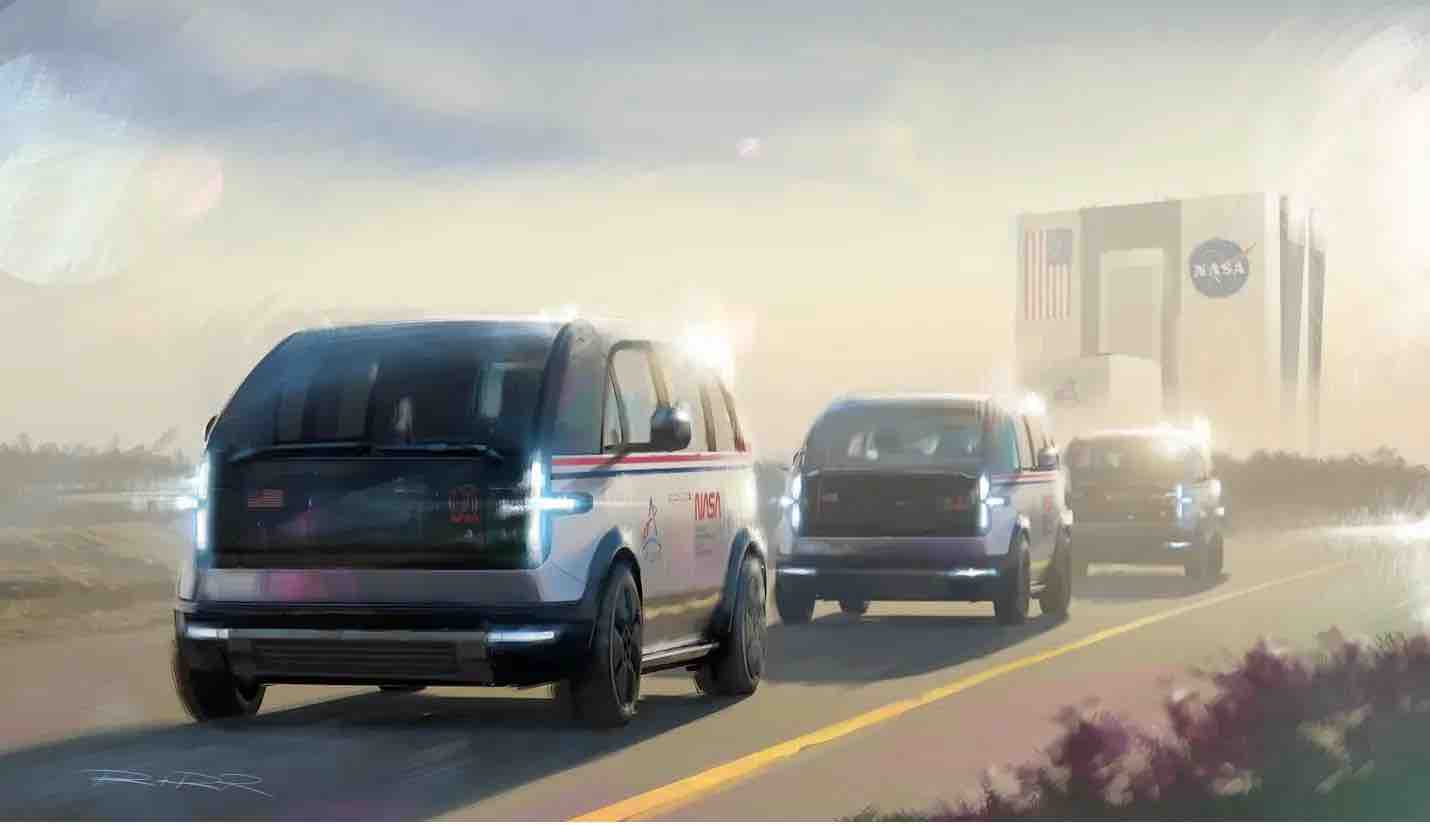Space travel is about to get a lot more eco-friendly as NASA prepares for next year’s Artemis II moon mission, which will feature electric vehicles (EVs) and fuel cell technology never before used by the agency. The voyage is the second scheduled flight of the Artemis program and the first mission that will include a staffed crew, Space.com reported.
The launch is tentatively scheduled for November 2024. According to NASA, Four astronauts will “venture around the moon” on Artemis II as part of a broader mission to establish a long-term presence on the moon for science and exploration.
Among the companies providing EV technology and equipment for the mission are Canoo and Toyota Motor.

Photo Courtesy Canoo
Canoo is a Torrance, CA-based EV manufacturer that recently announced the delivery of three Crew Transportation Vehicles (CTVs) to NASA’s Kennedy Space Center in Florida.
According to a July press release, the CTVs will transport the astronauts to the launch pad for the Artemis lunar missions and feature designs that aim to maximize comfort and safety during the nine-mile journey to the launch pad.
“We are thrilled to be a part of the Artemis missions and to deliver NASA`s first zero-emission built-for-mission crew transportation vehicles,” Tony Aquila, Canoo chairman and CEO, said in a statement. “It’s a very proud day for Canoo and all of our partners who worked so hard to ensure we perform our part to transport the astronauts for the first nine miles of every launch.”

Photo Courtesy Canoo
Canoo was awarded the NASA contract in April 2022. Space Explored reported that delivery is “one of the fastest turnarounds for the Artemis Program from contract to delivery.” By delivering the vehicles so far ahead of the launch, teams will have time to practice driving to the launch pad and build expertise in relevant procedures.
The Canoo vehicle will be NASA’s first crew transport van to be powered entirely by batteries, Space Explored noted.
However, it’s not the first EV dedicated to space missions. Tesla was first in that respect with its fleet of Model Xs for SpaceX crews flying on the Crew Dragon spacecraft.
Meanwhile, executives at Japanese automotive giant Toyota recently announced plans to use regenerative fuel cell technology to power a lunar rover with a crew, Reuters reported. That announcement was part of a larger collaboration between Japan and NASA.
As Reuters noted, NASA expects Japan to provide a lunar rover with a “2029 target launch date” as part of the Artemis program. Toyota aims to secure an order for the manned lunar rover by the autumn of 2024. The vehicle itself should have the capacity to carry two astronauts for 42 days a year on missions and remain operational for a decade.
“Our idea is to continue with the lunar rover longer than those 10 years if there’s a company or arrangement that can supply the water needed for that,” Ken Yamashita, Toyota’s head of lunar exploration projects, told Reuters in an interview.
These initiatives came on the heels of NASA’s August 2022 selection of three companies to “further advance work on deployable solar array systems” that will help power the agency’s human and robotic exploration of the moon under the Artemis program.

Photo Courtesy NASA
A NASA press release at the time noted that reliable and sustainable power sources are “required to support lunar habitats, rovers, and even construction systems for future robotic and crewed missions.” To that end, the agency is supporting the “development of vertical solar arrays that can autonomously deploy up to 32 feet high and retract for relocation if necessary.”
“These prototypes will provide promising solutions for reliable power sources on the Moon, which are key to the success of almost anything we do on the surface,” NASA’s Niki Werkheiser said in a statement.





